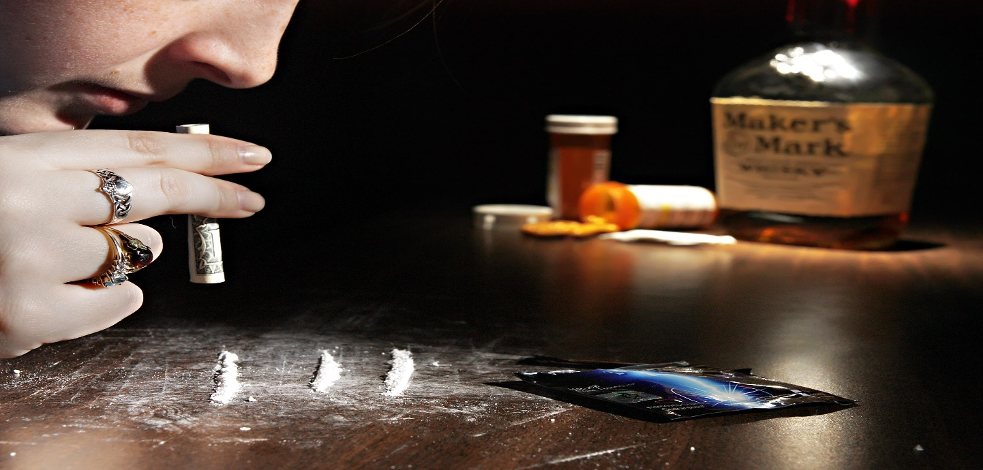Lyrical Cirrhosis, Chronic Dancing Liver Disease
how chronic is your life
when you are about to die
When all you know
It was just
a matter of time
how chronic is your life
when you know it was because
they (doctors) won’t treat you right
how chronic is it, when
there is too many of us for
someone to care…
black ball for a regenerative life
Terrorist dressed in white
Just because I like to write
Verlecia fields

Hepatitis B
Hepatitis refers to an inflammatory condition of the liver. It is commonly the result of infection with the hepatitis virus although there are other possible causes of hepatitis such as alcohol or even medications.
There are five major known strains of the hepatitis virus namely Hapatitis A, B, C, D and E. While they all cause liver disease of varying severity, they differ in important ways including modes of transmission and prevention. However, Hepatitis B and C are the most virulent strains because chronic infections are known to cause liver cirrhosis and liver cancer*. In this article, we focus on the mode of transmission, symptoms and prevention of Hepatitis B.
Mode of Transmission
Hepatitis B Virus infection could be easily contracted through:
- Contact with blood or wound exudate of an infected individual (high infectivity)
- Semen, vaginal fluid, and saliva of an already infected person (moderate infectivity)
- Urine, feces, sweat, tears, or breast milk of someone infected with the virus (low infectivity)
Symptoms of Hepatitis B Infection
Infection with hepatitis B virus any not present with any symptoms. Otherwise, infected individuals may present with non-specific symptoms such as:
- Extreme Fatigue
- Fever
- Nausea and vomiting
- Abdominal pain
- Pale stool
- Weight loss
- Dark Urine
- Yellow discoloration of the eyes and skin (Jaundice)
Prevention of Hepatitis B Infection
Hepatitis B virus is one of the infections that is preventable through vaccination. So, it is important to get vaccinated to avoid infection. Also, sharing of sharps should be avoided as well as abstinence or use of condoms during sexual activity.
Hepatitis B infection can be acute (if it lasts for less than six months) or chronic (if it lasts more than six months). Chronic hepatitis B increases your risk of developing liver failure, liver cancer or cirrhosis.

Viral Hepatitis
Alcohol, medications, toxins, and autoimmune diseases are common causes of hepatitis. However, viral hepatitis is due to an infection with the hepatitis virus. In this article, we discuss the five common viral strains of hepatitis namely Hepatitis A, B, C, D, and E.
Hepatitis A
Hepatitis A results from infection with the Hepatitis A Virus (HAV). The mode of transmission is via feco-oral route that is, an individual typically contracts HAV from food or water that has come into contact with fecal matter from a person with the virus. However, it is self-limiting as many people recover within weeks to months of being infected although rare cases that result in fatality sometimes occur.
Hepatitis B
The Hepatitis B Virus (HBV) causes hepatitis B. It is commonly transmitted via infected body fluids, such as infected blood, vaginal secretions, or semen. Infected individuals may be asymptomatic or manifest non-specific symptoms or even more severe symptoms. HBV infection can be an acute or a chronic infection. However, chronic HBV infection poses long-term complications of liver cirrhosis and cancer.
Hepatitis C
Hepatitis C is due to infection with Hepatitis C Virus (HCV). It is transmitted via infected body fluids and typically presents with long-term, life-threatening complications of liver cirrhosis and cancer like HBV infection.
Hepatitis D
It is caused by infection with Hepatitis D Virus (HDV). This rare form of hepatitis only occurs in people who are infected with the hepatitis B virus. So, an individual cannot contract HDV without having been infected with the hepatitis B virus.
Hepatitis E
Hepatitis E is a waterborne disease that results from infection with the Hepatitis E Virus (HEV). Like HAV, it is commonly found in unhygienic areas and is due to ingesting fecal-contaminated water supply. Hepatitis E is usually acute and like hepatitis A, it may present with rare life-threatening cases.

Debunking Myths about Drug Addiction
Addiction to pyschoactive substance use can be misunderstood. This may explain why there is a lot of stigma against individuals who suffer from substance addiction. This article aims to highlight common myths about drug addiction and debunk them.
MYTH 1: Addiction is the patient’s fault
Although it may seem so – after all, we think, the patient chose to drink or take substance – addiction is not a choice. It is a disease that deserves attention just like any other disease. No one chooses to be addicted to substance use; people suffering from addiction have altered brain structure that predisposes them to compulsive behavior, leading to repetitive drug use.
MYTH 2: Successful people can’t suffer from addiction.
Anyone can suffer from addiction, irrespective of their race, religion, or economic status.
MYTH 3: Substance addiction should be punished
Addiction is a disease, and should be treated as such. Punishing drug addicts with jail time or community service for their use of psychoactive substance is an ineffective way to curb the rate of substance addiction in the society. They should rather be encouraged to seek medical help.
MYTH 4: Addiction can be cured by willpower and going to treatment.
Addiction can’t be fixed by a single visit to the psychiatrist, or by a decision to stop using that psychoactive substance. Addiction can be recurrent and require long periods of treatment and follow up until the the individual can abstain from drug use.
MYTH 5: Only alcohol and hard drugs can cause addiction
People can also be addicted to prescription medication such as sedatives, painkillers, etc. as well over the counter medications.
MYTH 6: It is impossible to get addicted to drugs on the first try
No one can predict whether or not they will get addicted. A first try can lead to subsequent consumption, which can result in a cycle of abuse and addiction. The wiser choice is to abstain.

Drug Abuse and Addiction
Drug abuse refers to the use of illegal drugs such as marijuana, cocaine, heroin, LSD, etc, or the use of prescribed drugs above the prescribed dosage. It also refers to taking medications without a prescription or taking another person’s medication. It is important to note that drug abuse isn’t limited to illegal drugs alone. Prescription drugs that can be abused include stimulants, opioids (prescribed for pain), and sedatives.
The abuse of drugs or substances can result in an overdose which sometimes result in fatal outcomes. A spike in report of psychoactive substance use has created a need to understand the reasons why people abuse them, modalities of prevention and treatment of mental and behavioral disorder due to psychoactive substance use, and the relationship between drug abuse and addiction.
Reasons why people engage in psychoactive substance use
People take substance or engage in drug abuse for various reasons. The various reasons why people abuse psychoactive substances include but are not limited to:
- improve their performance at work, school, or sports
- Numb feelings of unpleasantness – for example – to cope with the negative feeling from a mental illness e.g. eating disorder
- Conform to the activities of a peer group
- Relieve stress
Preventing and Treating Mental and behavioral disorder due to psychoactive substance use
The prevention of drug or substance abuse is largely through public health education and awareness about the risks factors and dangers of drug or substance abuse. Identification of the various risk factors that can predispose an individual to psychoactive substance use is important in the prevention of psychoactive substance abuse. Individuals who also engage in psychoactive substance abuse should also seek help from a psychiatrist.
Treatment usually begins with a diagnosis. The biopsychosocial model is principally employed in the treatment of individuals who suffer from mental and behavioral disorder due to psychoactive substance use. This model basically uses biological treatment in the form of drugs and detoxification, psychological treatment such as cognitive behavioral therapy and psycho-education, and a social approach to ensuring successful treatment.
The Relationship between Drug Abuse and Addiction
Drug abuse can result in addiction. It happens slowly. For instance, the usual amount of a drug or substance an individual abuses does not produce the desired effect so, the individual increases the quantity and frequency in a bid to achieve that effect. This is known as tolerance. Over time, the individual may neglect other aspects of life due to an unhealthy dependence on the abused drugs. This isn’t due to moral weakness, but a change in the brain’s structure that stimulates the individual to consume more amount of the drug to recreate the feeling induced by that drug.

HOW ALCOHOL AND SUBSTANCE ABUSE CAN RESULT FROM EATING DISORDERS
Sometimes, an individual could suffer from an eating disorder and substance abuse at the same time. This is possible because people who suffer from eating disorders may use and abuse a variety of substances, particularly alcohol. However, they may also abuse a variety of other substances such as sedatives, marijuana, stimulants, caffeine, opiates, cocaine, hallucinogens or even inhalants.
For instance, research has reported that patients with bulimia nervosa and anorexia binge eating are most likely to use substances. Bulimia nervosa, however, is an eating disorder characterized by a rapid and excessive consumption of food (or binge eating), followed by purging and vomiting. Sadly, patients who suffer from bulimia nervosa are more likely to use and abuse laxatives, diuretics, stimulants and alcohol intake. This eating disorder results in the abuse of medications because people who suffer from it either want to get rid of the excess calories they have consumed to avoid weight gain or temporarily deal with the myriad of mental health problems that may arise from the eating disorder.
Patients who suffer from eating disorders and substance use and/or addictions should therefore get concurrent treatment. Treating only addiction in the background of eating disorders does not proffer any solution to the problem. However, some treatments adopted by psychiatrists to treat both disorders concurrently include Acceptance and Commitment Therapy (ACT), Cognitive Behavioral Therapy (CBT), and Dialectical Behavioral Therapy (DBT).

PREVENTION OF SEXUALLY TRANSMITTED INFECTIONS
So says the adage, ‘prevention is better than cure’. There are several ways to prevent or reduce the risk of contracting STIs:
Abstinence: perhaps the safest way to avoid contracting STIs is to stay away from Sex.
Use of condoms and dental dams: condoms provide a reasonable amount of protection against STIs but are not 100% reliable. A new latex condom or dental dam should be used for each sexual encounter. It’s also important to note that non-barrier contraceptives like intrauterine devices and birth control pills offer no protection.
Regulating drug and alcohol consumption: under intoxication, we lose much of our ability to reason sensibly and hence our tolerance to risk, including sexual risk, is increased.
Getting tested: before engaging in any sexual activity with a new partner, it is advisable that both individuals get tested for any STI. You may or may not proceed depending on the result.
Getting vaccinated: certain types of STIs can be prevented by getting vaccinated. Human Papilloma Virus (HPV), hepatitis A and hepatitis B are effectively combated by vaccines.

Types of Sexually Transmitted Infections
It’s going to be very difficult to win a fight against an enemy you don’t know. So to improve your chances of staying away from STI’s here is some information about the types of sexually transmitted infections
3 Broad Types of STIs
STIs can be broadly grouped into three, based on the organisms that cause the diseases:
1. Bacterial STIs
2. Parasitic STIs
3. Viral STIs
Bacterial STIs include diseases such as gonorrhea, syphilis, and chlamydia amongst many others. These STIs are quite common in our environment. Gonorrhea was once the most prevalent sexually transmitted disease in Nigeria. Bacterial STIs are relatively easy to treat and prevent. However, if left untreated, they can result in dire complications such as infertility.
Parasitic STIs are caused by organisms that live in humans and feed on them at the expense of their health. Trichomoniasis is the most common parasitic STI in Nigeria. It is by far more common among females. Usually, men that do have this STI do not experience any symptoms at all. However, males can carry and transmit this disease even without having any symptoms of infections.
Trichomoniasis is also treatable. To avoid serious complications, it should be detected and treated as soon as possible
Viral STIs are quite notorious for how dangerous and difficult they are to treat. Viral STIs that are popular in our environment include HIV, herpes, and Hepatitis B.
The effects of these viral infections on the body can be reduced by managing their symptoms, but they aren’t curable. However, they can be easily prevented by safe sexual practices. While some, like Hepatitis B, can be prevented by vaccination, it is better for you to completely avoid exposure to viral STIs.

Sexually Transmitted Infections Amongst Undergraduates
Sexually transmitted infections (STIs) are infections that are transmitted through sexual contact.
STIs can be passed through vaginal, anal, or oral sex. Rarely, prolonged physical contact is all that is needed for transmission of STIs
Some examples of STIs include HIV, gonorrhea, and herpes.
How Common are STIs Among Undergraduates
STIs are quite common among undergraduates. Over 1 million STIs are acquired daily worldwide and about 33% of these cases occur in people younger than 25 years old.
People of undergraduate age are at a relatively high risk of contracting STIs for reasons which include:
⦁ Biologically, women are more susceptible to STIs. This is because the vaginal surface is larger and also more vulnerable than the penis which is narrow and protected by a skin covering.
⦁ Lack of access to proper healthcare
⦁ Young people tend to keep multiple sexual partners
Why you should know about STIs
When you know about STIs, you know how to prevent been infected with them.
Another reason you should know about STIs is that these diseases are often curable. Gonorrhea, syphilis, and chlamydia for instance can easily be treated using antibiotics.

However, if left untreated, these diseases could progress and cause serious damage to the body. Such damage is often impossible to reverse once it has occurred. As such, it is important to treat these infections as early as possible. In the cases of incurable STIs such as HIV, early detection can help prevent the progression of these infections.
Symptoms of STIs
Different diseases have different symptoms. However, some common symptoms that hint at the presence of STIs include:
⦁ Genital sores or bumps
⦁ Pain or burning sensation during urination
⦁ Genital discharge
⦁ Painful sex
⦁ Unusual bleeding or discharge
With STIs being commonly found among the undergraduate population, it is important for undergraduates to understand what they are and how they can be prevented as well as treatment options.

WRAP YOUR GIFT
Cold breeze and heavy rainfall,
Weather for two to join.
Chills run down Greg’s spine,
Arousal up his loin.
Supposedly, he has a gift,
Bigger than any latex wrap.
The girl allows and receives
Gladly abiding the trap.
A gift more than she bargains
A cost greater than one dime.
Because tests are such wastes,
Of money, effort and time.
A few weeks and a genital rash,
Earn little over a frown,
But a discharge screams ‘infection’
And ‘Greg’s out of town.’
Cold breeze and heavy rainfall,
Syphilis esteems such a day,
A day second in spread to,
The debauchery of valentine’s day.
FIYINFOLUWA EGBEWALE
PRECLINICAL 2
